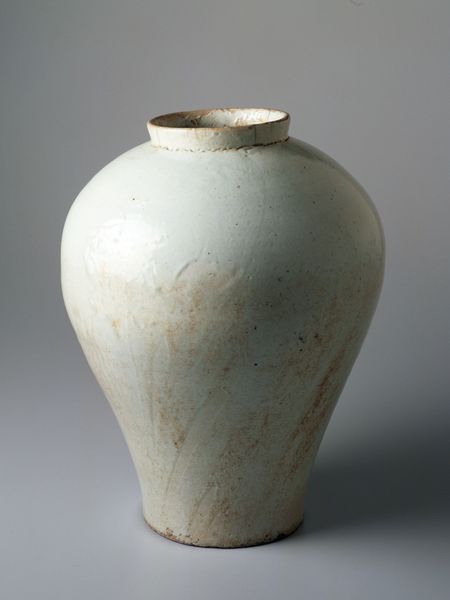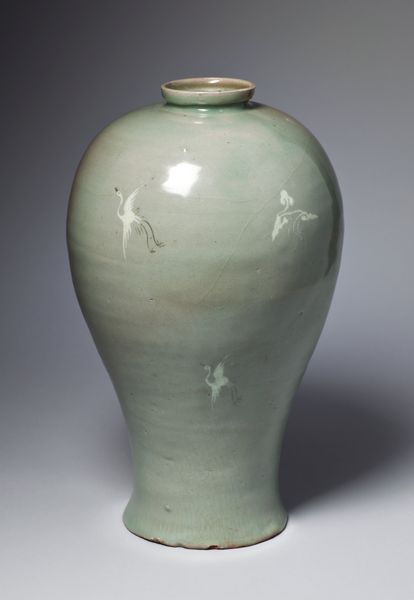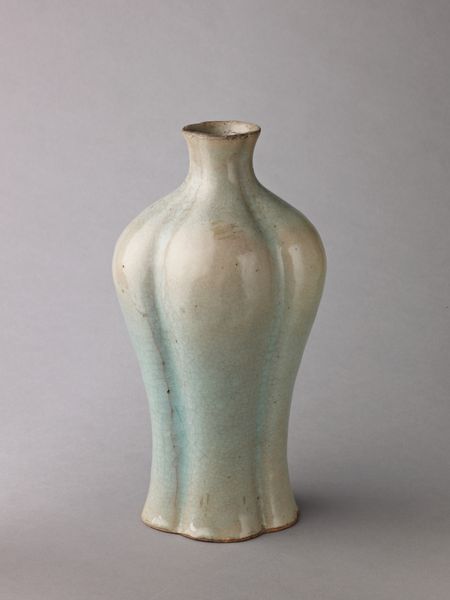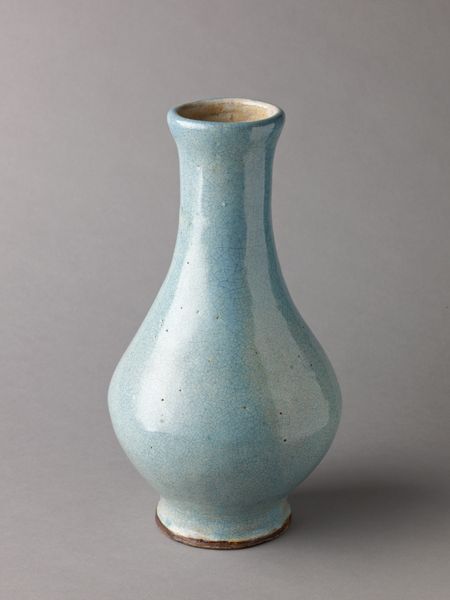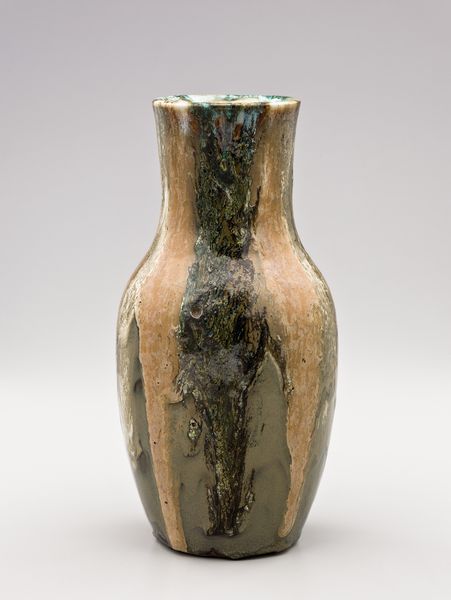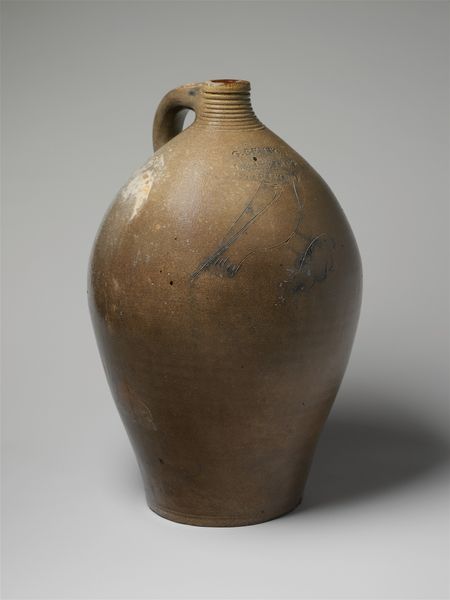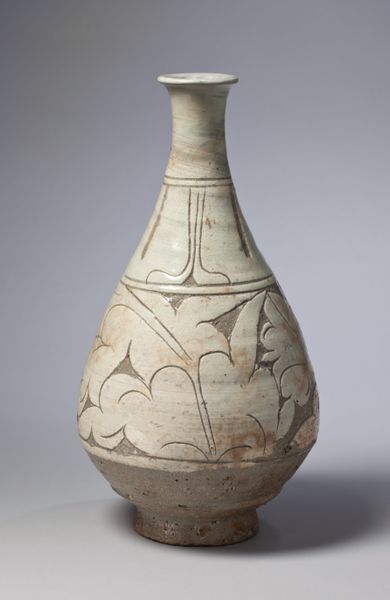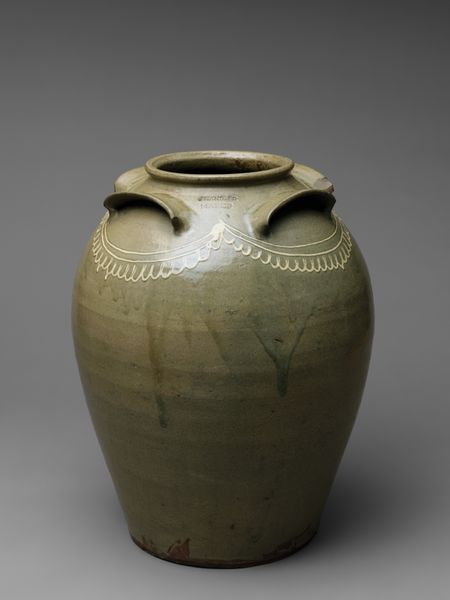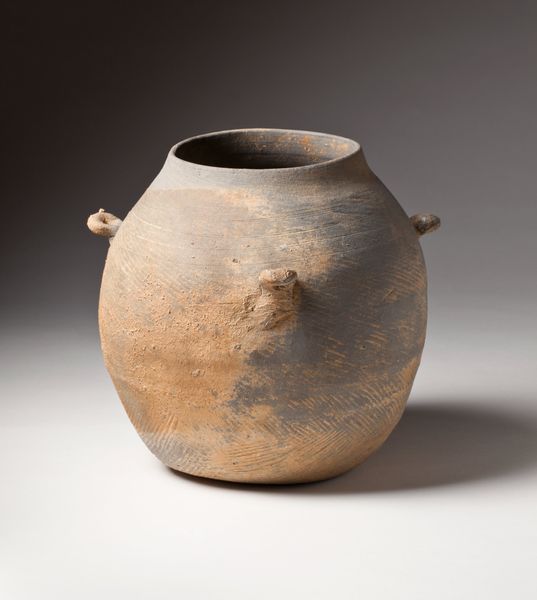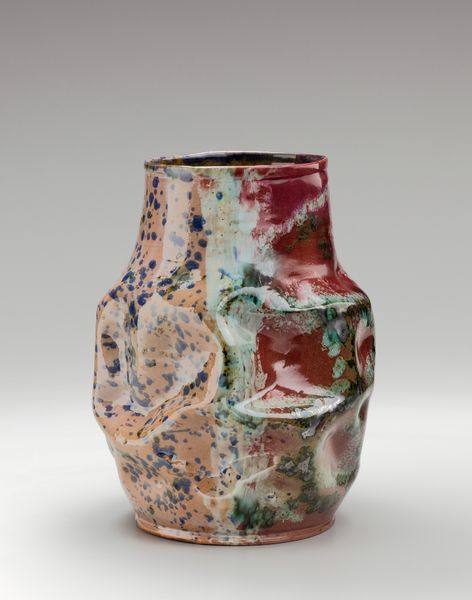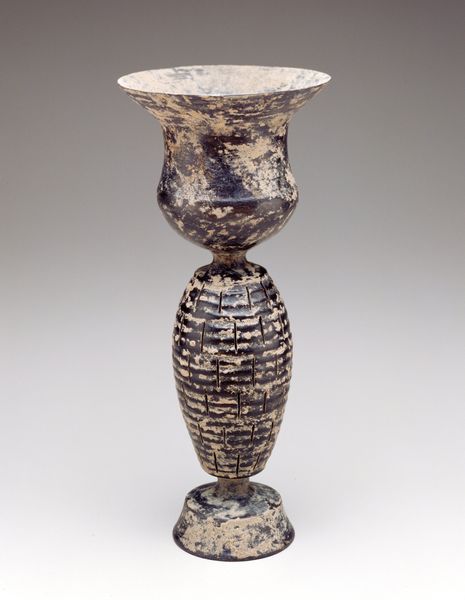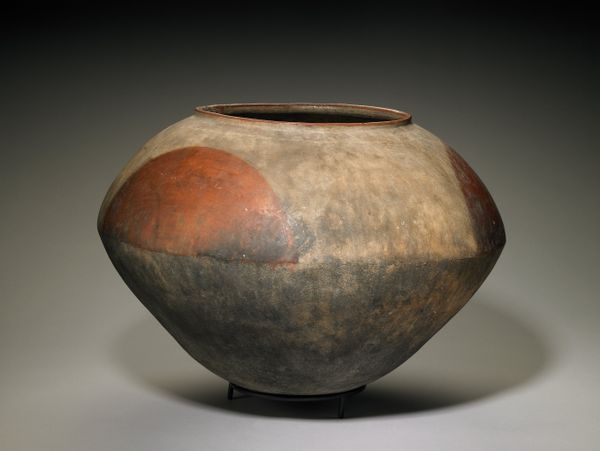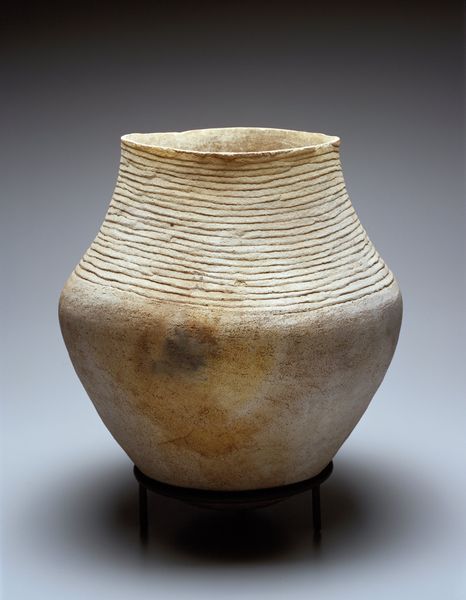
ceramic, earthenware
#
asian-art
#
ceramic
#
earthenware
#
stoneware
#
geometric
#
ceramic
Dimensions: 11 3/16 x 7 3/8 in. (28.4 x 18.73 cm)
Copyright: Public Domain
Curator: Welcome. We're looking at a Black Pottery Tripod Jar, attributed to the Xiajiadian culture and dating around 2000 BCE. The Minneapolis Institute of Art holds this remarkable piece, crafted from earthenware. Editor: Immediately striking is the vessel's stark geometry. The three pointed legs ascend to form a smooth, expanding body, topped with a flaring rim. It evokes a curious balance of delicacy and ruggedness. Curator: Indeed. It's crucial to understand the Xiajiadian context. These jars were produced by a Bronze Age culture in what's now Northeast China. We can see them as expressions of a specific socio-economic system, potentially linked to ritual practices. The presence of pottery making indicates a settled community. Editor: Function, certainly. But let’s return to the jar itself. Note the monochromatic palette—a spectrum of grays achieved, presumably, through reduction firing. This choice streamlines form, drawing the eye toward proportion. And the surface appears heavily textured. Curator: Absolutely. This textured surface possibly resulted from the techniques the Xiajiadian artisans used, which could give insight into the societal structures around pottery making during this era. Editor: Perhaps the result was intentional. The varied grays, combined with incised surface scratches, enhance its feeling of antiquity—the play of light and shadow gives the piece considerable depth. I would argue that these aesthetic qualities are a central key to its purpose, beyond the function. Curator: I agree that form is of note, though it should be considered in concert with its historic purpose. The tripod form allowed for stable heating, vital for preparing food in a nomadic or semi-nomadic culture. Each design decision—the firing technique, choice of materials, texture—is inextricably linked to that period's conditions and the function it served. Editor: True, function arises out of culture, so we may indeed consider the artifact as an exemplar of utility born of cultural practice, and the execution, superb. Curator: Understanding the art requires us to explore the values, needs, and environment that produced such work. This ceramic provides such rich grounds for exploration. Editor: Exactly. Hopefully our discussion has deepened appreciation for the formal elements and craftsmanship behind this unassuming but magnificent work.
Comments
minneapolisinstituteofart almost 2 years ago
⋮
The Xiajiadian culture in northeast China is known for its black ware vessels. The elongated tripod form with partly hollow udder-shaped legs is one of the most characteristic forms of this culture. Evenly potted, the upper part of the hand-built vessel may have been finished on a potter's wheel.
Join the conversation
Join millions of artists and users on Artera today and experience the ultimate creative platform.
